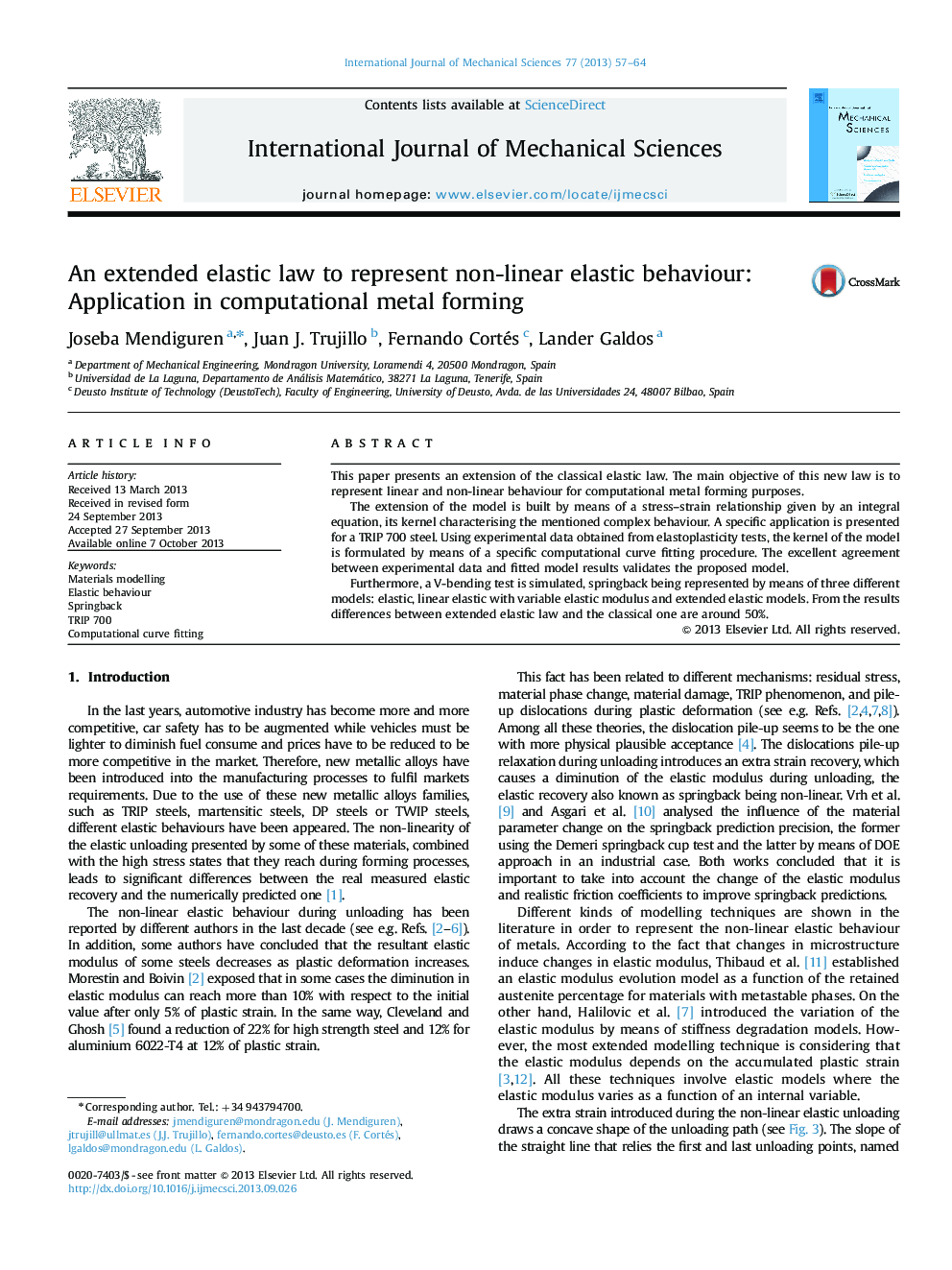| Article ID | Journal | Published Year | Pages | File Type |
|---|---|---|---|---|
| 782365 | International Journal of Mechanical Sciences | 2013 | 8 Pages |
•An extension of the classic elastical law able to represent non-linear behaviour.•The law has been particularised for the TRIP 700 steel.•Pseudo-analytical V-free bending test to analyse influence of elastic behaviour.•New model predicts an angle more than 50% greater than the classical one.
This paper presents an extension of the classical elastic law. The main objective of this new law is to represent linear and non-linear behaviour for computational metal forming purposes.The extension of the model is built by means of a stress–strain relationship given by an integral equation, its kernel characterising the mentioned complex behaviour. A specific application is presented for a TRIP 700 steel. Using experimental data obtained from elastoplasticity tests, the kernel of the model is formulated by means of a specific computational curve fitting procedure. The excellent agreement between experimental data and fitted model results validates the proposed model.Furthermore, a V-bending test is simulated, springback being represented by means of three different models: elastic, linear elastic with variable elastic modulus and extended elastic models. From the results differences between extended elastic law and the classical one are around 50%.
